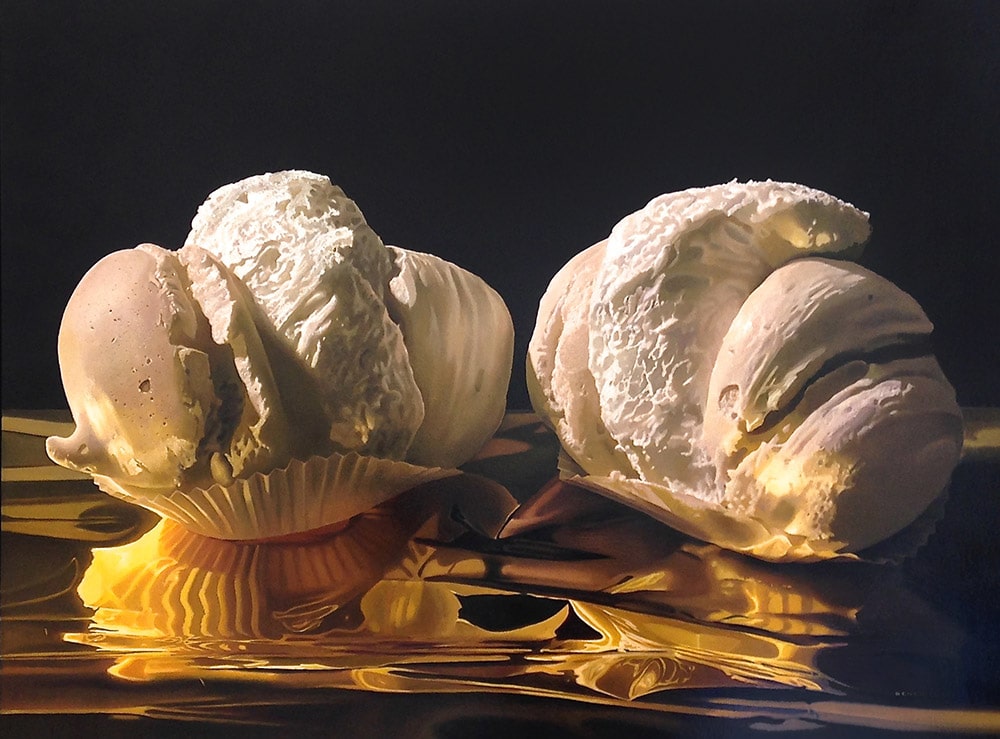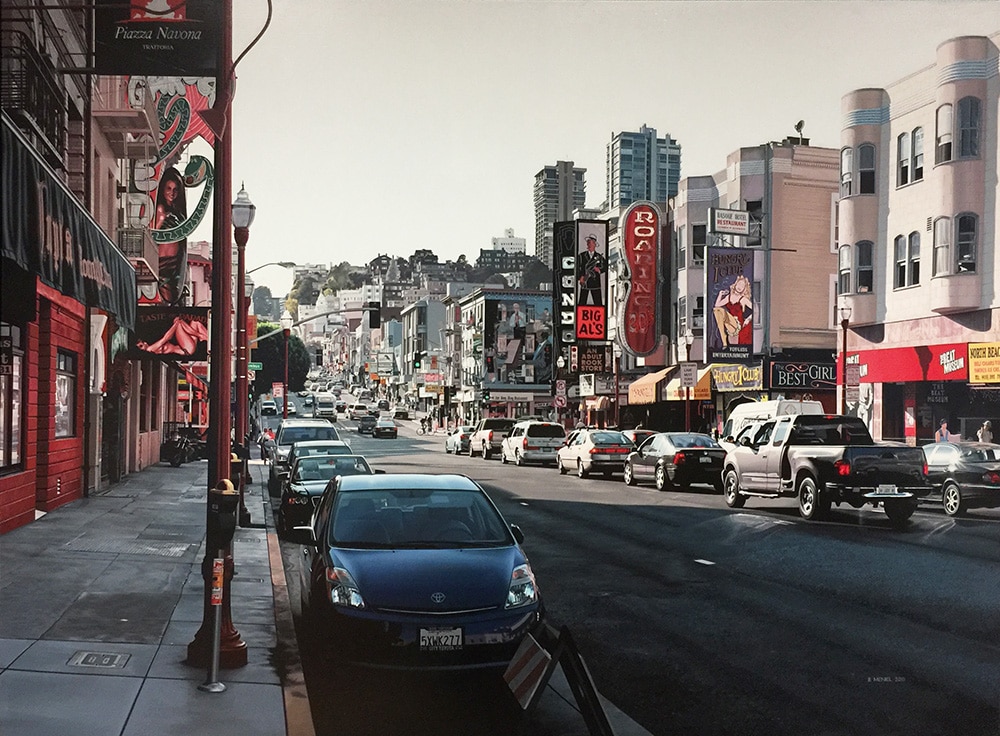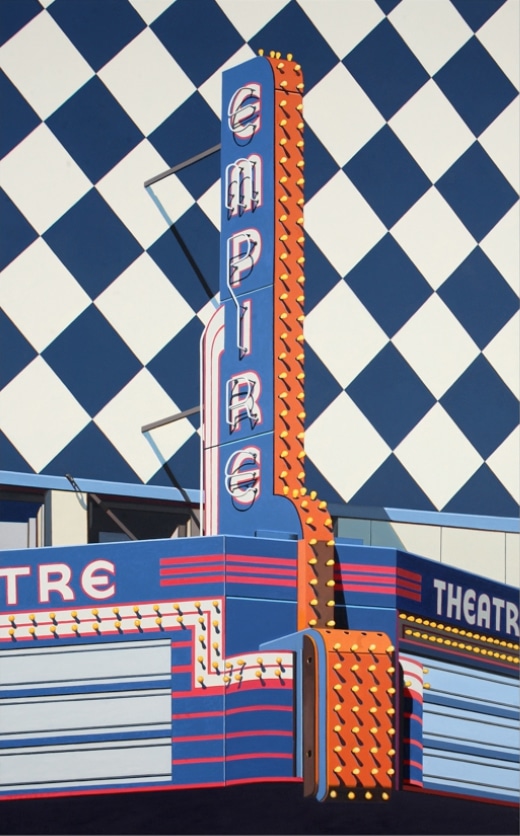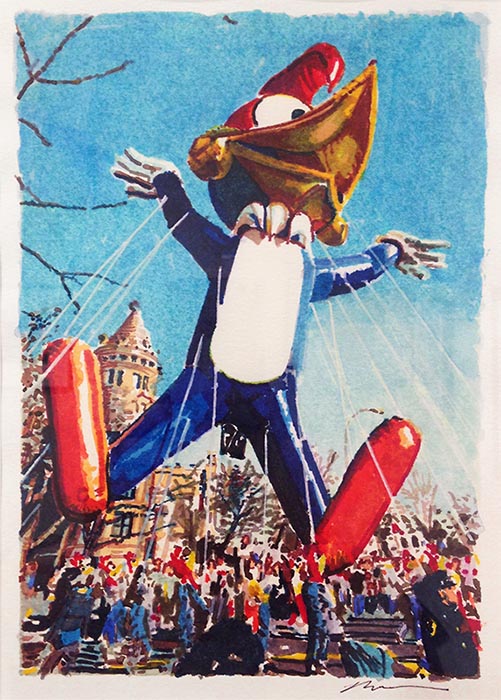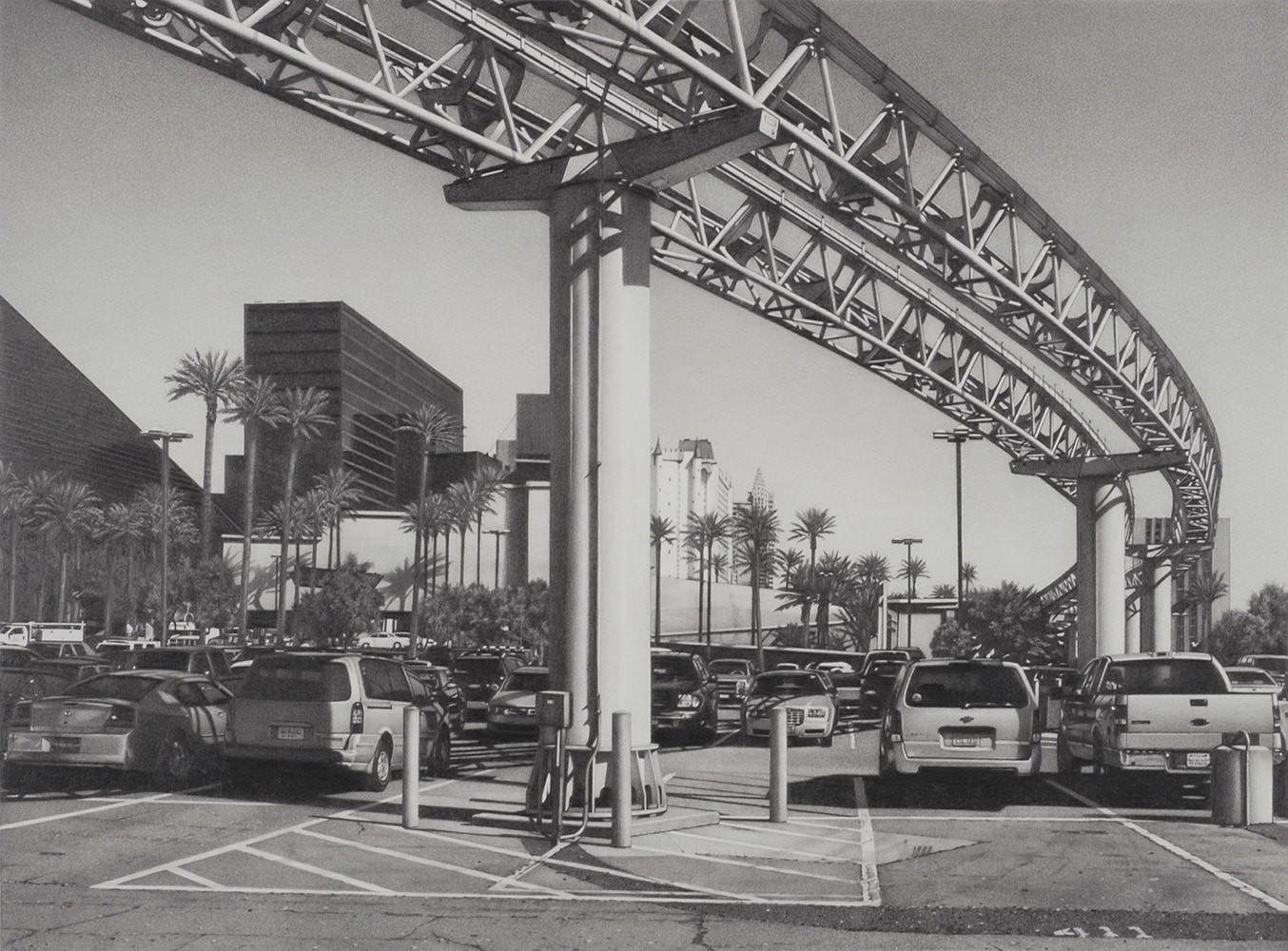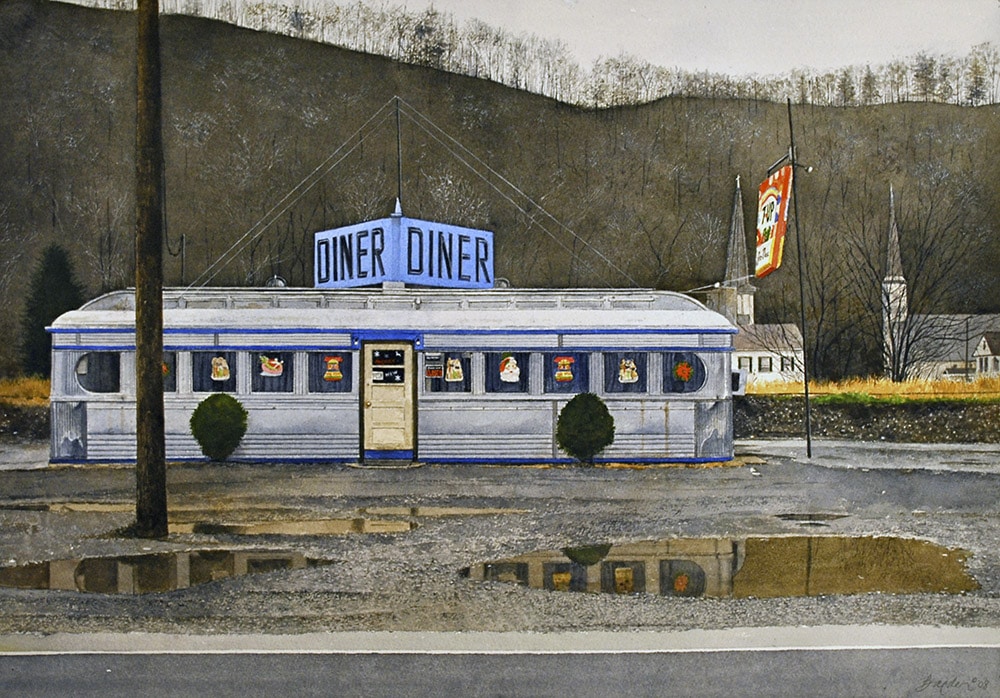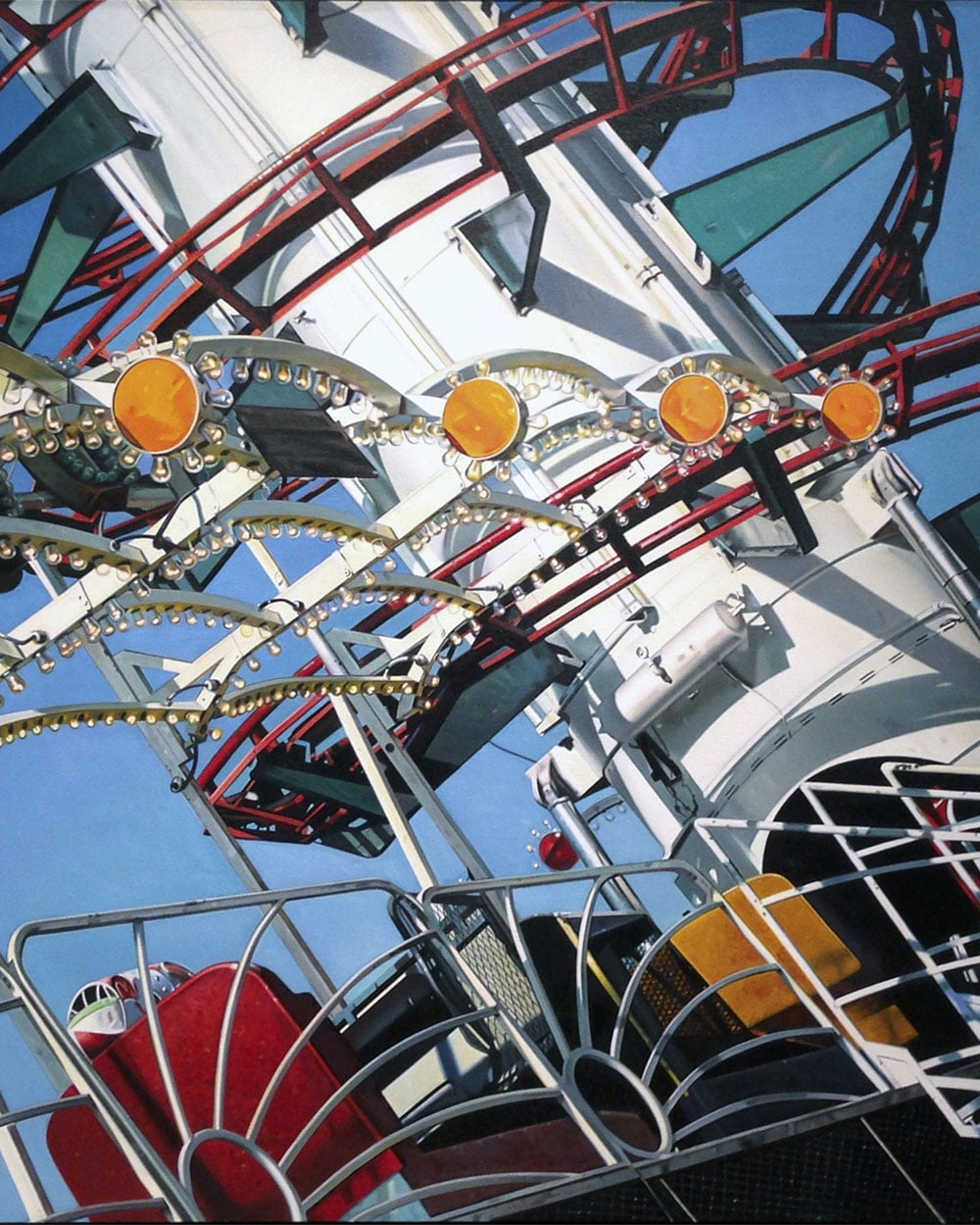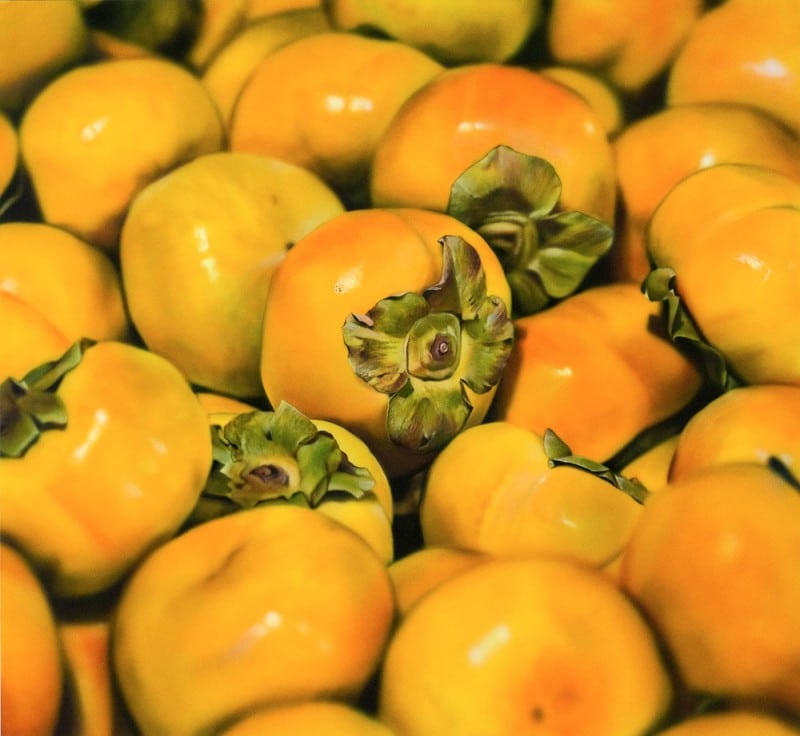PHOTOREALISM
John Salt
Destroyed Pontiac
1972
Watercolor on paper
Sheet: 21″ x 27″ (53.3 x 68.6 cm)
Image: 12-3/4″ x 19″ (32.4 x 48.3 cm)243.8 cm)
Luigi Benedicenti
Meringhe II
2012
Oil on panel
39-5/16″ x 52-5/16″ (99.9 x 132.9 cm)
Bertrand Meniel
Roaring
2010
Acrylic on canvas
37-1/8″ x 50-1/4″ (94.3 x 127.6 cm)
Robert Cottingham
Empire (Cincinnati)
2013
Oil on canvas
67″ x 41-1/2″ (170.2 x 105.4 cm)
Ron Kleemann
Study for ‘Pecker-Heads’
1987
Watercolor and colored markers on Arches watercolor paper
Sheet: 12-13/16″ x 9″ (31 x 22.9 cm)
Image: 8-1/2″ x 6″ (21.6 x 15.2 cm)
Framed: 17-3/4″ x 15-1/8″ (45.1 x 38.4 cm)
The term Photorealism was coined in 1969 by Louis K. Meisel. Photorealism focuses on the meticulous reproduction of photographic imagery in paint and developed as a reaction against the abstraction prevalent in modernist movements. Practitioners of the style often select contemporary scenes with articulations of light playing across diverse surfaces such as urban and suburban landscapes, the polished surfaces of automobiles, and the reflective interiors and exteriors of diners in order to demonstrate a highly refined technical ability. Although some European artists entered the Photorealist scene, it was largely recognized as an American movement with artists like Richard Estes and Charles Bell at the epicenter of the movement on the East Coast and Photorealists including Robert Bechtle and Ralph Goings active on the West Coast.
While individual styles vary, the photorealist process begins with a photograph, either “found” in print or intentionally produced as a study, which provides an information-dense record that is reproduced by hand through rigorous processes unique to each artist’s working method. The result can often appear to be a detached, objective image presented without comment in which the artist’s hand has been erased. Yet, each step of the process, from selecting a photograph to the execution of the highly polished canvas, represents the personal style and intention of the artist. Although originally derided for its comprehensibility, Photorealism can trace its emphasis on material reality to earlier American painters including Charles Sheeler and further to the technical acumen of seventeenth-century Dutch artist Johannes Vermeer.
EXHIBITIONS
Photorealism: The Everyday Illuminated
FURTHER READING
The New York Times – ” ’70s Photorealism: Revived and Still Relevant”
INQUIRE ABOUT AVAILABLE WORKS:
Randy Dudley
Desert Tramline
2007
Graphite on paper
Sheet: 19-9/16″ x 25″ (49.7 x 63.5 cm)
Image: 15-3/8″ x 20-3/4″ (39.1 x 52.7 cm)
Ralph Goings
Booth Group
1983
Watercolor on paper
Sheet: 14-13/16″ x 22-3/4″ (37.6 x 57.8 cm)
Image: 10″ x 14-1/2″ (25.4 x 36.8 cm)
John Baeder
Jim’s Diner
2008
Watercolor on paper
Sheet: 22-1/2″ x 30″ (57.2 x 76.2 cm)
Image: 19-1/4″ x 27-1/2″ (48.9 x 69.9 cm)
David Parrish
Tobbaggan
2010
Oil on canvas
40″ x 42″ (101.6 x 106.7 cm)
Ben Schonzeit
Persimmons
2010
Acrylic on polyester canvas
72″ x 78″ (182.9 x 198.1 cm)
Rod Penner
House with Yellow Toy
2012
Acrylic on canvas
10″ x 15″ (25.4 x 38.1 cm)
Tom Pfannerstill
Coca-Cola Cup
2010
Acrylic on wood
7-7/8″ x 5-5/16″ (20 x 13.5 cm)


